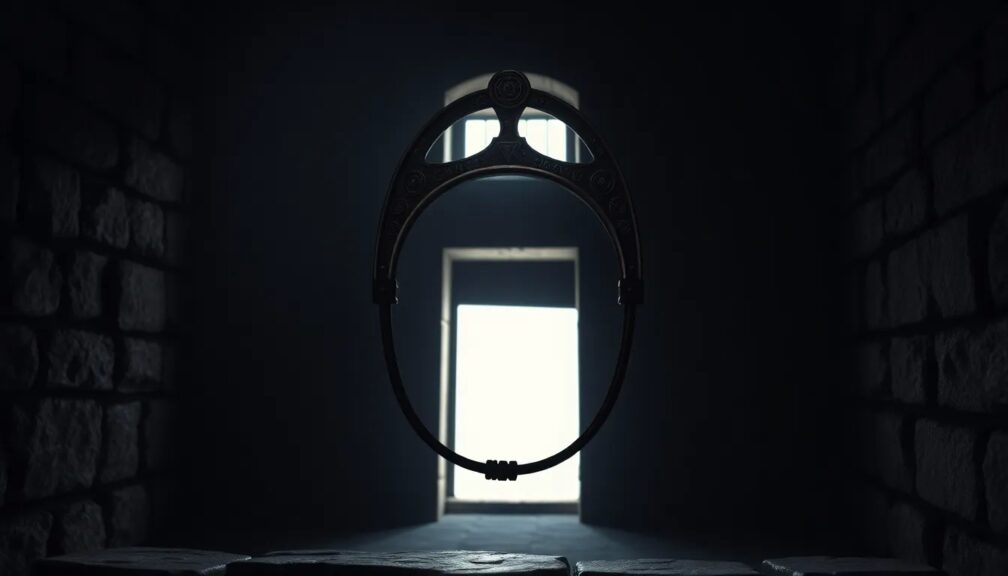Scold’s Bridle: History and Meaning of the Medieval Punishment Mask

Throughout history, masks have been used for a multitude of purposes, from ritualistic and ceremonial to practical and protective. One of the most intriguing and often unsettling uses of masks is found in the realm of punishment, particularly during medieval times. The scold's bridle, also known as the gossip's bridle or wife muzzle, is a notorious example of a medieval mask of shame that served as a punishment device for women accused of gossiping or speaking out of turn.
This article will explore the multifaceted world of masks, particularly focusing on those used for punishment and shame throughout history. We will delve into the cultural, symbolic, and psychological implications of these masks, examining their historical context, design, and the societal attitudes they reflect. By the end, you will have a richer understanding of how masks, especially those associated with shame and punishment, have shaped social dynamics and perceptions of morality.
The Historical Context of Masks
Masks have been an integral part of human culture for thousands of years, with their origins tracing back to ancient civilizations. From the elaborate theatrical masks of the Greeks and Romans to the spiritual masks of African tribes, these artifacts serve as a bridge between the physical and metaphysical worlds. The use of masks in various cultures often transcends mere adornment; they are imbued with meanings that reflect the beliefs, values, and practices of the societies that create them.
In medieval Europe, the concept of shame and punishment became increasingly intertwined with the use of masks. The medieval masks of shame, such as the scold's bridle, were designed not only to punish but also to publicly humiliate the offender. This practice was rooted in societal norms that sought to maintain order and uphold moral values. Women, in particular, were often the targets of such punishments, as their voices and opinions were deemed dangerous if they contradicted established expectations. The gossip's bridle served as a physical manifestation of the societal constraints placed on women, capturing the essence of their subjugation.
The construction of these masks often reflects the attitudes of the time. For instance, the scold's bridle, made of iron or wood, was designed to restrain the mouth and prevent the wearer from speaking. This was a literal and symbolic silencing of women who were perceived as troublesome or excessively vocal. The bridle’s design, which could include an iron tongue gag, illustrates the brutality of the punishment and the lengths to which society would go to control women's behavior.
The Scold's Bridle: Design and Function
The scold's bridle, sometimes referred to as the brank, is one of the most notorious medieval torture masks. Its design is both functional and deeply symbolic. Typically made from metal, the bridle consists of a headpiece that encircles the head, with an iron structure extending to cover the mouth. Some versions included a protruding metal tongue that would be forced into the wearer's mouth, effectively preventing speech. This design not only served the purpose of punishment but also acted as a public display of shame.
The process of using the scold's bridle punishment was often carried out in a public setting, where the offender would be paraded through the streets as a warning to others. This public humiliation was a key aspect of the punishment, as it reinforced the societal norms of the time. Women who wore the gossip mask were subjected to ridicule and scorn, not only for their alleged misdeeds but also for challenging the patriarchal order. The medieval torture helmet served a similar purpose, but the bridle was distinct in its focus on silencing and shaming the wearer.
Moreover, the scold's bridle represented a broader societal fear of female autonomy. Women who spoke out or acted independently were often labeled as "scolds," and their punishment was seen as a method of reinforcing control over their behavior. The mask became a tool for the state to exert power over women, reflecting the anxieties of a society that sought to maintain hierarchical structures.
Cultural Significance of Punishment Masks
The use of masks as punishment devices extends beyond the scold's bridle. Various cultures throughout history have developed similar masks to address issues of morality and social order. These masks often serve as reminders of the consequences of deviating from societal norms. In many cases, they were not just instruments of punishment but also acted as cautionary tales for others in the community.
For example, the iron mask punishment is another historical reference that highlights the use of masks for shame and control. The infamous "Man in the Iron Mask" is a figure shrouded in mystery, believed to have been imprisoned in France during the 17th century. While the exact reasons for his imprisonment remain unclear, the use of an iron mask symbolizes the desire for anonymity and the extreme measures taken by authorities to suppress dissent or maintain secrecy. In this case, the mask becomes a representation of both punishment and the fear of the unknown.
In addition to the gossip's bridle and the iron mask, various cultures have created masks that embody the idea of shame and punishment. For instance, in some Native American traditions, masks were used in ceremonies that addressed moral transgressions. These masks served to both acknowledge wrongdoing and facilitate the process of redemption. This contrasts sharply with the medieval practices that sought to publicly humiliate individuals, reflecting a more restorative approach to justice.
The societal implications of punishment masks extend beyond their physical design. They provide insight into the cultural values and beliefs of a given time period. The use of masks as tools for shame reveals deep-seated anxieties about behavior and morality, particularly concerning gender roles. The medieval shame masks serve as a historical lens through which we can examine the evolution of societal attitudes toward punishment and social order.
The Psychological Impact of Shame Masks
The psychological ramifications of wearing a mask of shame are profound and far-reaching. The scold's bridle, for instance, was not merely a physical impediment; it was a psychological weapon wielded against those deemed unworthy by society. The act of publicly shaming individuals through the use of such masks can have lasting effects on their self-esteem and mental health.
Research in psychology suggests that public humiliation can lead to feelings of worthlessness and isolation. Individuals subjected to the gossip mask were not only punished for their alleged transgressions but were also branded as social pariahs. This stigmatization often resulted in a cycle of shame that could extend beyond the immediate punishment, affecting relationships and social standing for years to come.
Furthermore, the use of punishment masks like the medieval torture masks reflects a broader societal tendency to impose control through fear. The psychological impact of such practices can create an environment where individuals feel compelled to conform to societal expectations out of fear of retribution. This dynamic can lead to a culture of silence, where dissenting voices are stifled, and individuals are discouraged from expressing their true thoughts and feelings.
Interestingly, this psychological manipulation through shame is not solely a relic of the past. Modern parallels can be drawn to contemporary practices that involve public shaming, whether through social media or other platforms. The concept of a "digital mask" manifests in the form of online harassment and bullying, where individuals are subjected to ridicule and humiliation in a virtual space. The psychological effects of these modern "muzzles" can be just as damaging as those experienced by medieval individuals who wore the scold's bridle.
The Legacy of Masks in Modern Society
As we navigate the complexities of modern society, the legacy of masks—particularly those associated with punishment—remains relevant. While the gossip's bridle and similar devices may no longer be used in the same overt manner, the underlying concepts of shame, control, and societal expectations continue to permeate our lives.
In contemporary discourse, we often encounter discussions surrounding the stigmatization of certain behaviors or identities. The mask of shame has evolved, taking on new forms in the digital age, where individuals can be publicly shamed or ostracized for their opinions or actions. This modern iteration of the scold's bridle serves as a reminder that while the physical devices may have disappeared, the cultural and psychological mechanisms of control remain.
Moreover, the symbolism of masks in protest movements cannot be overlooked. Activists often use masks to convey messages of dissent, anonymity, and resistance against oppressive systems. The act of wearing a mask can be seen as both a reclaiming of power and a rejection of the shame historically associated with being silenced. In this way, masks continue to serve as a powerful tool for expressing identity and challenging societal norms.
The conversation surrounding masks also touches upon issues of mental health and societal expectations. As we strive for a more inclusive and understanding society, it is essential to recognize the historical context of shame and punishment. By acknowledging the legacy of masks, we can work toward dismantling the stigmas that still exist today and foster an environment where individuals feel empowered to share their voices without fear of retribution.
Conclusion: The Enduring Fascination with Masks
Throughout history, masks have captivated our imagination, serving as symbols of identity, power, and control. The scold's bridle and other punishment masks offer a chilling glimpse into a world where shame was wielded as a tool of social order. As we explore the complexities of masks, we uncover layers of meaning that resonate with contemporary issues surrounding gender, power dynamics, and societal expectations.
From their historical roots to their modern iterations, masks continue to hold a mirror to our collective psyche. They reflect our fears, desires, and the ongoing struggle for autonomy and self-expression. By examining the multifaceted nature of masks, we can better understand our past and work toward a more compassionate future—one where the idea of shame becomes a thing of the past, and individuals are free to embrace their voices without fear.



